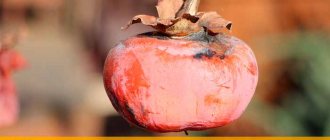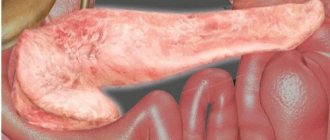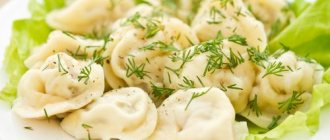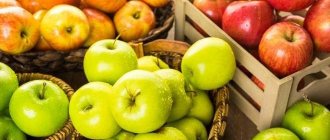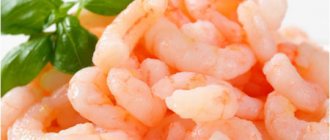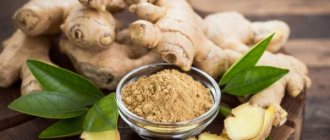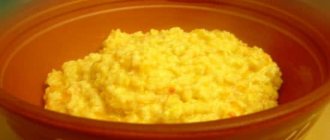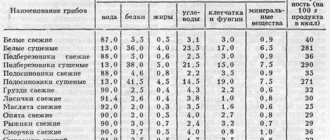In the article, we will take a closer look at whether it is possible to eat corn with pancreatitis, how to prepare healthy corn porridge, and whether popcorn and corn flakes are allowed for this disease.
Why do you need a diet?
The diet for inflammation of the pancreas is characterized by a large number of restrictions, especially in the initial stages of treatment of the pathology. However, the diet recommended for the recovery and remission stages includes a variety of foods that can be used to prepare many delicious dishes.
The main goal of the diet is to reduce the load on the digestive organs and improve the functional state of the pancreas. Allowed products contain a sufficient amount of useful substances. This diet does not cause harm to the body.
During exacerbation of the disease
An acute attack of pancreatitis occurs due to the fact that pancreatic juice, for a number of reasons, “gets stuck” inside the pancreas, begins to corrode the organ from the inside, causing inflammation and necrosis.
At such a moment, any food in the stomach irritates the gastrointestinal tract. Firstly, foods are not broken down properly due to a lack of pancreatic enzymes in the intestines. Secondly, food receptors signal to the pancreas that it needs to produce a lot of pancreatic juice for the incoming food. The juice is intensively produced and, having problems with its release, causes even more harm to the pancreas.
Features of nutrition for pancreatitis
Inflammation of the pancreas can be acute or chronic. Regardless of the type and stage of the disease, a mandatory part of therapy is adjusting the diet and following a certain diet. Pancreatitis always develops in several stages. At each of them, the patient is recommended to follow specific nutritional rules.
initial stage
The initial stage of pancreatitis is a period of exacerbation of the inflammatory process. The disease manifests itself with maximum symptoms (pain, attacks of vomiting and nausea, flatulence).
At this stage of the pathology, it is important to eliminate the load on the pancreas when digesting food. The best result in this case can only be achieved by fasting.
Nutrition Features:
- therapeutic fasting for two or three days;
- to avoid dehydration of the body, it is allowed to drink alkaline mineral water (necessarily without gas);
- For drinks, you can take rosehip decoction in small portions;
- fasting should be carried out under the supervision of a specialist.
Improvement stage
The improvement stage is manifested by a decrease in the intensity of pain symptoms (the patient’s body temperature stabilizes, flatulence becomes less pronounced, and there are no attacks of vomiting or nausea). At this stage of development of the pathology, it is allowed to resume nutrition, but subject to a number of restrictions and rules.
Food portions should be small, and it is better to divide food consumption into 7-8 times a day.
Nutrition Features:
- in the first days of improvement, the patient is allowed to eat slimy soups and pureed porridges;
- new food products are introduced into the menu gradually and in small quantities;
- the calorie content of dishes in the first days should not exceed 800 kcal (the indicator also increases gradually);
- You cannot eat food against your will (if the patient has no appetite, then you need to eat food in minimal portions, but more often);
- it is necessary to maintain a drinking regime (at least two liters of water per day);
- Dishes are allowed to be prepared only by cooking and steaming methods;
- the consistency of all dishes should be liquid or semi-liquid;
- protein steam omelet, meat and fish products can be introduced into the menu from the fourth day of improvement (meat should be low-fat varieties and chopped as much as possible);
- meat broths, corn and millet porridge, products that have a negative effect on the digestive tract are excluded from the diet.
Recovery
The recovery stage is the stage at which all symptoms of pancreatitis are relieved. The diet can be expanded, supplemented with vegetables, fruits, new drinks and dishes. When compiling the menu, the principles of the 5p Diet are taken as a basis. This dietary nutrition program implies a clear distinction between products into permitted and prohibited categories, the use of certain cooking methods and adherence to general rules that help prevent the exacerbation of pathology.
Nutrition Features:
- the consistency of the dishes may allow chopped options (applies to meat and fish);
- Do not eat too hot or cold food (maximum temperature - 50 degrees);
- the size of one serving is allowed to be increased to 250-300 g;
- meals are provided in fractions (5-6 times a day);
- it is allowed to introduce dairy and fermented milk products (with a reduced percentage of fat), stewed or baked vegetables and fruits into the diet;
- It is prohibited to consume canned food, lard, marinades, fatty and fried foods, mushrooms, sweet fruits, vegetables containing coarse fiber, sweets, fresh bread, carbonated drinks and alcohol;
- consumption of prohibited foods can cause an exacerbation of the inflammatory process.
Remission
The remission stage is a period during which there are no symptoms of pathology. At this stage, the menu can be expanded as much as possible, but in compliance with the general principles of the 5p Diet. The duration of remission directly depends on the patient’s proper nutrition.
Even a single consumption of prohibited foods (for example, fatty, fried, salty or spicy foods) can provoke a sudden attack of exacerbation of the inflammatory process.
Nutrition Features:
- compliance with the principles of fractional nutrition and food temperature;
- eating only foods that belong to the approved list;
- exclusion of all products from the prohibited list;
- you should not overeat or go hungry;
- The last meal should be taken three hours before bedtime.
For chronic pancreatitis
During the course of the chronic form and in the remission stage, the list of products is increased, relative to the acute type. At the same time, they also need to be eaten judiciously, because the correct diet for chronic pancreatitis and at the time of remission will depend on its duration and the risk of recurrence of the disease.
Is it possible to eat corn if you have pancreatitis? No. At the same time, in the lull of pathology, it is allowed to add porridge to the diet in small doses. If the porridge has been cooked until fully cooked, it will be easier for the stomach to digest. To properly cook porridge, follow the rules:
- Initially, you need to grind the cereal into a powdery consistency. During remission, this type of corn is gentle and does not exert excessive adverse pressure.
- The product takes about half an hour to prepare. Completeness is revealed when the porridge resembles thickened jelly. If you cook and eat it made in this way, it will reduce the pressure on the entire digestive system.
- For pancreatic disease, porridge can be taken up to 2 times a day. Regardless of all approaches to preparation, cereal still poses a great danger to the functionality of the organs of the tract, because it contains starch.
corn porridge
The porridge has a rather specific taste, so not everyone will like it. Sometimes, for those who love corn and suffer from organ damage, second courses made from corn are a real treasure.
In addition, it is sometimes allowed to introduce corn flour into the diet for chronic forms and in remission. It is not as harmful as vegetable grains, and also leads to rapid satiety and relieves the feeling of hunger.
During remission, corn silk can be used as a decoction. Thanks to such infusions, the exocrine function of the organ and the functioning of the gastrointestinal tract are normalized.
To make a healing medicine for the treatment of the pancreas you need:
- grind 1 large spoon into a powder structure and dilute in 250 ml of water;
- set aside to infuse for an hour;
- wait until it boils over low heat, and then cook for 7 minutes;
- express using gauze before use;
- drink 250 ml 3 times a day. Treatment lasts 20 days.
In acute and chronic types of pancreatitis, adhere to nutrition, then the symptoms of the disease will not bother the patient for a long time.
benefits of corn
What to eat for pancreatitis
A doctor can provide a list of permitted and prohibited foods for pancreatitis. The principles of nutrition during the inflammatory process correspond to the rules of the 5p Diet. The duration of the period of strict dietary restrictions depends on the individual clinical picture of the patient’s health status. In some cases, the diet is prescribed for 6-12 months, but if there are complications, the need to follow it may become lifelong.
Video on the topic: What can you eat if you have pancreatitis? Secrets of nutrition (diet) for pancreatitis.
Is it possible to eat walnuts and seeds if you have pancreatitis?
Any types of nuts and seeds are prohibited from being consumed during exacerbation of the pathological process. It is recommended to introduce such products into the diet from the remission stage. The seeds should not be consumed fried. Kozinaki is also prohibited. It is acceptable to consume raw sunflower seeds or homemade halva.
The daily norm is no more than five walnut kernels or a small pinch of seeds. You cannot use them every day.
Nuances:
- walnuts can be consumed not only on their own, but also used for preparing dishes (salads, desserts);
- You can eat nuts and seeds only if there are no complaints about abnormalities in the digestive tract.
What vegetables can you eat?
For pancreatitis, it is recommended to consume vegetables only after heat treatment. For example, you can include vegetable puree, stews, vegetarian soups, and baked dishes in the menu. Some vegetables contain dietary fiber and coarse fiber. These substances have a negative effect on the digestive tract and increase the risk of irritation of its mucous membranes.
Allowed vegetables:
- potato;
- Brussels sprouts and cauliflower;
- zucchini;
- carrot;
- beet;
- squash.
What fruits or berries can you eat?
The list of berries and fruits allowed for pancreatitis includes sweet apples, pears, and bananas. During the period of remission, you can eat melons, watermelons, persimmons, plums, avocados, and pomegranates. Among the berries during the inflammatory process, blueberries, lingonberries, grapes, gooseberries, currants, strawberries, raspberries and blueberries can be introduced into the diet.
Features of eating berries and fruits:
- fresh fruits can be introduced into the diet only during a period of stable remission and in small quantities;
- the main way to consume berries and fruits is heat treatment (compotes, jelly, mousse, jelly, pudding and puree);
- It is acceptable to eat baked fruits (for example, berries and pears);
- Before consumption, the skin of the fruit must be removed and the seeds removed.
Which meat products can you
Meat for pancreatitis can only be consumed in lean varieties. At the initial stage of the diet, meat products are used to prepare soufflé. Gradually, dumplings, meatballs, and cutlets are introduced into the diet. Meat can be cooked in pieces only at the stage of remission. The list of permitted products includes veal, beef, chicken, turkey, and rabbit. It is strictly forbidden to consume waterfowl meat.
What kind of fish can you
The menu for pancreatitis should include only low-fat fish. Such products can be introduced into the diet from the fifth or seventh day after the attack has stopped. You can cook fish by boiling, baking, stewing or steaming. The fried version is strictly prohibited. Fish should not be used to prepare broths.
Allowed types of fish:
- cod;
- perch;
- pollock;
- haddock;
- hake;
- flounder;
- pike.
Dairy products what to choose
Dairy and fermented milk products must be present on the menu for pancreatitis, but such products are introduced into the diet only at certain stages of the disease. They should not be used during an exacerbation and in the first days of rehabilitation therapy. Gradually, porridge with diluted milk, cottage cheese with a reduced percentage of fat content and natural yogurt without dyes are being introduced into the menu.
If you have inflammation of the pancreas, you should not consume baked or whole milk, or drink it in its pure form.
Features of introducing dairy products into the diet:
- it is allowed to add milk to dishes (omelettes, porridges, mashed potatoes, puddings);
- It is recommended to drink tea with added milk;
- milk should be boiled before use;
- Hard cheeses, condensed and baked milk, ice cream, sour cream and cream with a high percentage of fat content should not be included in the diet.
Are all cereals allowed?
When the pancreas is inflamed, only certain types of cereals are allowed to be consumed. Oatmeal can be used as a remedy (during an exacerbation of the disease, an oat cocktail must be present on the menu).
Additionally, you can include buckwheat, rice and semolina in your diet. Other options are prohibited. Corn and millet cereals are especially prohibited.
Is it possible to have sweets with pancreatitis?
Most sweets are prohibited for pancreatitis. However, you can include sweet dishes that you prepare yourself in a minimal amount on the menu. For example, fruit mousses, jellies, homemade marshmallows or marmalade. Products must be free of food dyes. If you don't have a food allergy, you can use honey to add a sweet taste to drinks.
Allowed options during the remission stage:
- paste;
- marshmallows;
- fondant;
- marmalade;
- honey.
What seasonings can you use?
It is prohibited to consume spicy seasonings if you have inflammation of the pancreas. Spices can provoke an exacerbation of pathology and cause a powerful painful spasm. Onions, horseradish and garlic are completely excluded from the diet. To improve the taste of dishes, you can use parsley, dill, basil, saffron and cumin. These products are distinguished by the absence of negative effects on the digestive system, but it is recommended to consume them in minimal quantities.
Forbidden Corn Products
Despite the beneficial properties of the cereal, there are corn products that are prohibited for both types of pancreatitis:
- Canned corn. When preparing for preservation, the product loses almost all its vitamins. In return, it is saturated with substances (preservatives) that adversely affect the body and cause an exacerbation of the disease. It is not recommended to eat canned food even in small doses.
- Cornflakes. These products contain food coloring, large amounts of sugar and flavor enhancers. It is very undesirable to consume flakes for pancreatitis.
- Popcorn. For pancreatitis, puffed corn is prohibited due to the abundance of various additives, and also because it is fried for cooking. But fried, salty, spicy foods are prohibited even during the period of remission.
- Corn sticks. This product, despite its easy absorption in the stomach, is prohibited due to food coloring, flavor enhancers and large amounts of sugar. Such additives negatively affect the condition of a patient with pancreatitis.
All these corn products are strictly contraindicated for type 2 diabetes.
What can you drink if you have pancreatic disease?
If you have diseases of the digestive tract, you should not drink coffee, strong tea and carbonated drinks. Permitted options include fruit drinks, compotes, rosehip decoction, diluted juices and alkaline mineral water (still).
It is acceptable to drink weak tea (black, green). You can add milk to the drink.
Is it possible to drink alcohol if you have pancreatitis?
Alcoholic beverages should not be consumed at all stages of pancreatitis. Even a single violation of this rule can cause an attack of exacerbation of the inflammatory process. Alcohol contains components that have a negative effect on the mucous membranes of the digestive tract and the process of food digestion. If you consume such drinks during pancreatitis, there will be not only a decrease in the tendency to recovery, but also the risk of serious complications (including those incompatible with the patient’s life).
For acute pancreatitis
Use after an attack of pancreatitis is prohibited. There are good reasons for this. This product is difficult for the pancreas to process, which becomes inflamed during pancreatitis and is unable to digest food of this kind. It is rich in starch.
Corn is a rough food that takes a lot of effort from the stomach and intestines to break down. Therefore, despite the benefits, a person without problems with the digestive system sometimes finds it difficult to eat such food, and even more so for a person suffering from pancreatitis.
How does exacerbation of pancreatitis affect nutrition?
Exacerbation of pancreatitis is a significant reason for adjusting the diet. From the moment of the attack until the period of remission, the patient should follow a diet. In the first days of an exacerbation, therapeutic fasting is recommended (complete exclusion of any food is necessary). From the third or fourth day of therapy, you can gradually restore the diet, but only if there is a tendency to recovery.
Important principles:
- during the stages of improvement and recovery of the patient, the amount of fat and salt in the diet is limited;
- the calorie content of food should not exceed 1000 kcal;
- eat food at least six times a day (in small portions);
- The menu should contain only products from the approved list.
Features of product use
Can you eat canned corn if you have pancreatic disease? Gastroenterologists have learned that for pancreatitis, pickled vegetables are considered no safer than raw ones. As with other canned foods, the cereal is sold with the addition of vinegar, citric acid, and preservatives, which provoke severe outbreaks of pancreatitis.
Even if you add corn to a dish in small quantities, this can lead to the development of an attack of pathology.
Sticks made from vegetables also do not need to be included in the diet in case of pathology. With this processing method, the grains do not have natural heaviness, and they contain various harmful additives.
Is it permissible to include popcorn in the diet if the disease is in remission? No, because it also contains chemical additives, salt and sugar, and flavor enhancers. In addition, the cooking procedure itself is harmful to the digestive organs - frying.
It is forbidden to include corn flakes in the diet for pancreatitis. The reason is the same as for canned popcorn. If you often eat cereal in large quantities, it is harmful.
- Cereals are high in calories, since when preparing them they use refined oil, sugar, and other high-calorie additives.
- There are stabilizers, flavorings, and flavor enhancers that negatively affect the tract. Cereals are especially dangerous if eaten in the morning and when a person is hungry.
cornflakes
Regarding boiled corn, it is also unacceptable to eat it, since the grains contain a large amount of downed fibers that are not digestible in the stomach.
In rare cases, if the grains are well cooked, it is allowed to consume no more than 50 grams per day and no more than 2 times a month.
Prohibited foods and diet violations
Violation of diet principles can cause a number of negative consequences for the patient. Firstly, dietary nutrition is an integral part of the treatment of pancreatitis (the symptoms of the pathology cannot be eliminated with medications alone). Secondly, the dietary nutrition program is designed to restore the functional state of the pancreas. Following a diet will allow you to achieve stable remission and reduce the risk of sudden attacks. Thirdly, the menu contains products that are beneficial for the digestive system.
Failure to comply with recommendations for adjusting the diet can provoke complications and the need for urgent surgical intervention.
| Vegetables | Radish, radish, turnip, eggplant, white cabbage, bell pepper |
| Cereals | Barley, corn, millet cereals |
| Meat | Pork, waterfowl meat, fatty meats, offal |
| Fish | Fatty fish, carp, mackerel, sturgeon, salmon |
| Milk products | Whole and baked milk, products with added dyes |
| Mushrooms | All types of mushrooms |
| Legumes | Peas, beans, lentils |
| Sweets | Chocolate, sweet pastries with cream, pastries, cakes, halva, confectionery |
| Beverages | Coffee, strong tea, carbonated drinks |
Useful properties of vegetables and harm to the body
Corn is a valuable product with a large amount of coarse dietary fiber in its composition. Thanks to these fibers, the intestines are cleansed and the functioning of the entire gastrointestinal tract is improved. The cereal is rich in other beneficial substances, including:
- It is recommended to cook corn porridge with water; you should not add milk, as it creates additional stress on the diseased organ,
- cooking time - 30 minutes or more. The porridge should be cooked for so long that it becomes like a thick jelly. In this state, the dish does not burden the digestive system,
- It is advisable to cook corn porridge with a small amount of vegetables. Such dishes are more easily digested by the body, and the gastrointestinal tract is relieved.
Such simple rules help to diversify the menu of a patient with pancreatitis. Porridge quickly fills a person and relieves the feeling of hunger.
Corn porridge can be prepared according to another recipe:
- bring water to a boil (3-4 cups for viscous porridge or 5-6 cups for liquid porridge),
- pour 1 cup of cereal into boiling water: add in small portions, stirring constantly,
- reduce heat and simmer the dish for 30-40 minutes,
- as soon as the cereal is boiled, cover the container with a lid and place it in the oven, which must be preheated and turned off, i.e. the residual heat is enough for the porridge.
Stores sell crushed corn grits, polenta, and ready-to-cook porridge.
Canned corn
Any preservation is contraindicated in case of inflammatory processes occurring in the pancreas. This also applies to canned corn. Nutritionists believe that this product is the most dangerous for pancreatitis, because it can provoke an exacerbation of the disease. A large number of preservatives contribute to this.
Sticks
Corn sticks are absorbed by the body much easier than whole cereal grains. But this product is not recommended for use if there is inflammation of the pancreas. The ban is due to the fact that during the production of sticks many substances are added to them that are harmful for pancreatitis: food coloring and flavor enhancers. The product contains a large amount of sugar, which also causes harm to the diseased organ.
Popcorn
A favorite delicacy for many is produced from corn grains - popcorn. But a patient with pancreatitis should not get carried away with it. The product contains various additives, sugar, dyes. Method of preparation: frying in oil, which contains chemicals. All this puts stress on the pancreas, causing it to become inflamed.
Flakes
Flakes, or puffed corn, are not recommended by nutritionists for people suffering from pancreatitis. Various additives and a lot of sugar are used in the preparation of the delicacy, which harms the pancreas.
Beneficial properties of cornPancreatitis
Snacks
Another popular delicacy made from corn is snacks. If you have pancreatitis, you can’t use them all for the same reason - the presence of large amounts of sugar, chemical additives and other substances harmful to health. Eating snacks often leads to an attack.
How to cook tasty and healthy
There are not very many corn dishes that are approved for consumption during pancreatitis.
Therefore, you need to know some rules for preparing tasty and healthy cereal porridge:
- Grind the cereal thoroughly to a powder.
- Pour in water or skim milk in a ratio of 1:2.
- Bring the porridge to a boil over low heat and cook for 30 minutes.
It is not recommended to eat corn porridge more than once a week, as it is difficult to digest. If after eating such a dish your condition worsens sharply, completely eliminate corn from your diet, giving preference to lighter foods.
1
This is interesting: Is it possible to drink alcohol with pancreatitis, especially in acute form?
Is it possible to eat corn flakes with milk if you have pancreatitis?
Corn, as an agricultural crop, ranks third after rice and wheat in popularity. It is very nutritious and has many valuable qualities for the body.
But a healthy product is not always safe, especially when it comes to an inflamed pancreas. With pancreatitis, you need to treat any dish with extreme caution, take into account its pros and cons, features of preparation and consumption.
Beneficial and harmful properties of cereals
Ancient peoples considered corn a gift from the solar deity. And not without reason. This cereal has an amazing composition:
- corn contains a lot of invaluable elements (phosphorus, potassium, magnesium, iron, calcium, zinc, sodium);
- There are also a lot of vitamins (A, K, D, B1-3-6-9-12);
- at 70% carbohydrate – only 1.5% fat and 9% protein.
However, such a rich internal content of the product can be not only beneficial, but also harmful during periods when the digestive organs are weakened. Corn is considered “difficult” to break down and therefore aggravates the failure of pancreatic enzyme production.
If it is not used in a timely manner (for example, during a period of exacerbation of pathology), the pancreas becomes even more inflamed. And this leads to serious pathologies.
If you eat corn, following all the recommendations of gastroenterologists, the product will show its best side:
- will lower cholesterol levels;
- will help regulate insulin production;
- improves gastric motility.
So, at what stages of pancreatitis is corn acceptable, and at what stages is it not?
During exacerbation of the disease
An acute attack of pancreatitis occurs due to the fact that pancreatic juice, for a number of reasons, “gets stuck” inside the pancreas, begins to corrode the organ from the inside, causing inflammation and necrosis.
At such a moment, any food in the stomach irritates the gastrointestinal tract. Firstly, foods are not broken down properly due to a lack of pancreatic enzymes in the intestines.
Secondly, food receptors signal to the pancreas that it needs to produce a lot of pancreatic juice for the incoming food.
The juice is intensively produced and, having problems with its release, causes even more damage to the pancreas.
During the acute period of pancreatitis, the patient is not simply prohibited from eating corn. He was prescribed complete food rest, that is, hunger.
The first days after an attack, you can only drink rosehip decoction, adding a little slimy porridge and vegetable soups to your diet. Therefore, such complex products as corn are returned to the menu only after several weeks (and sometimes months) of stable remission.
In chronic form
People diagnosed with chronic pancreatitis continue to follow a diet. The main principle of nutrition remains the choice of the least heavy foods that require the least effort of the gastrointestinal tract. To do this, they use the sparing method: food, before entering the stomach, is first thoroughly boiled and ground.
Based on the above, if you have pancreatitis, it is not recommended to eat whole corn kernels. This product is eaten only in the form of mashed cooked grains or porridge made from corn grits.
Nutritionists recommend starting to eat corn only if there have been no relapses of acute pancreatitis for at least two months. Coordination of the diet with the attending physician is a prerequisite for successful treatment of chronic pancreatitis. Otherwise, you can harm the pancreas by inappropriately introducing corn into the menu, and negate all drug treatment.
Recommendations for use
If the attending physician has allowed you to try several boiled corn grains, then this should be done following the following technology:
- For cooking, only ripe, but not old cobs are chosen;
- cook the corn until completely cooked;
- select several cooked grains, trying to cut them without hard membranes;
- grind in a blender to puree;
- eat no more than one tablespoon of puree for the first time, after which they take a break for a week.
An interesting folk method for treating pancreatitis is preparing a decoction of corn silk. This corn product has natural choleretic properties. It is very useful for diseases of the gallbladder and the presence of stones in the bile ducts.
It is best to prepare decoctions of corn silk using pharmaceutical raw materials. Drying and storing the ingredient yourself is a rather complicated process. In order to avoid mistakes in cooking technology and not harm the pancreas, you should definitely consult with your doctor.
Can I eat it canned?
For diseases of the pancreas, any canned products are included in the prohibited list. The process of preparing this type of corn involves the use of preservatives and other harmful ingredients. Eating even a few grains added to a dietary vegetable salad can trigger an acute attack of pancreatitis.
In addition, canned corn does not retain even half of its valuable food qualities. Therefore, adding it to your diet is not only dangerous, but also irrational.
The best type of corn product to return to the menu for chronic pancreatitis is porridge. It is advisable to buy cereals rather than grind them at home yourself. Store-bought cereal, as a rule, is well cleaned and sufficiently crushed.
- Store-bought cereal is washed well under running water;
- half a glass of cereal is poured with warm boiled water in a ratio of 1:2;
- After the water boils, the porridge is placed in a steam bath and cooked for about half an hour.
In addition to a steam bath, porridge can be cooked safely in the oven (in a roaster) or in a slow cooker.
You can add a little butter or honey to the finished corn porridge (for those who like sweet porridges).
The first portion of porridge should not be more than 100 grams. In the future, if there is no deterioration in the patient’s condition, a portion of 150 grams is allowed.
Warning! If after eating corn porridge there is a feeling of heaviness in the epigastric region (in the upper abdomen) or nausea, this product should definitely be excluded from the menu.
Cereal sticks and flakes
Modern food technology has developed a good way to reduce the severity of corn on the digestive system by using the product to make puffed flakes and sticks. But, unfortunately, during the production of these goodies, harmful ingredients are added:
- artificial flavor enhancer;
- a large amount of powdered sugar;
- dyes;
- flavorings.
All these components make the product dangerous to the pancreas. Even for people who have a healthy digestive organ, nutritionists do not recommend getting carried away with corn sticks or sweet corn flakes. Parents especially often make a mistake when teaching their children to this type of product.
Use of corn and its products for pancreatitis
Corn is considered the oldest agricultural crop to be revived in Latin America.
During archaeological excavations, it was found that the first to cultivate this crop were the ancient Indians living in the modern territories of Peru and Mexico, about several thousand years ago. Nowadays, corn is grown on almost all continents, covering vast areas, occupying 3rd place in area after rice and wheat fields. This culture has a wide range of beneficial properties, helps improve the performance of the digestive system, reduces the concentration of harmful cholesterol compounds, providing a preventive effect against the formation and progression of atherosclerotic pathology. In the article, we will take a closer look at whether it is possible to eat corn with pancreatitis, how to prepare healthy corn porridge, and whether popcorn and corn flakes are allowed for this disease.
